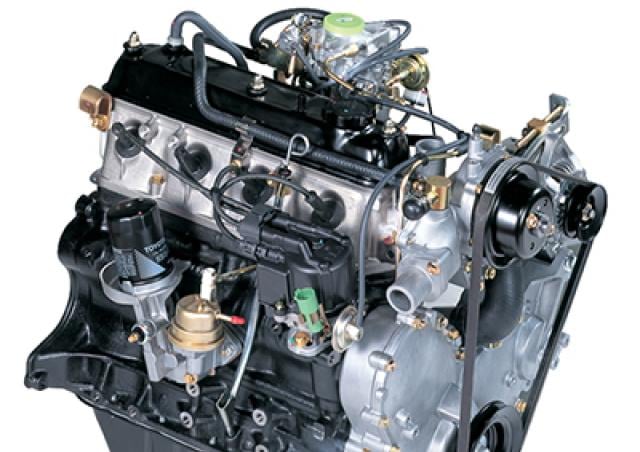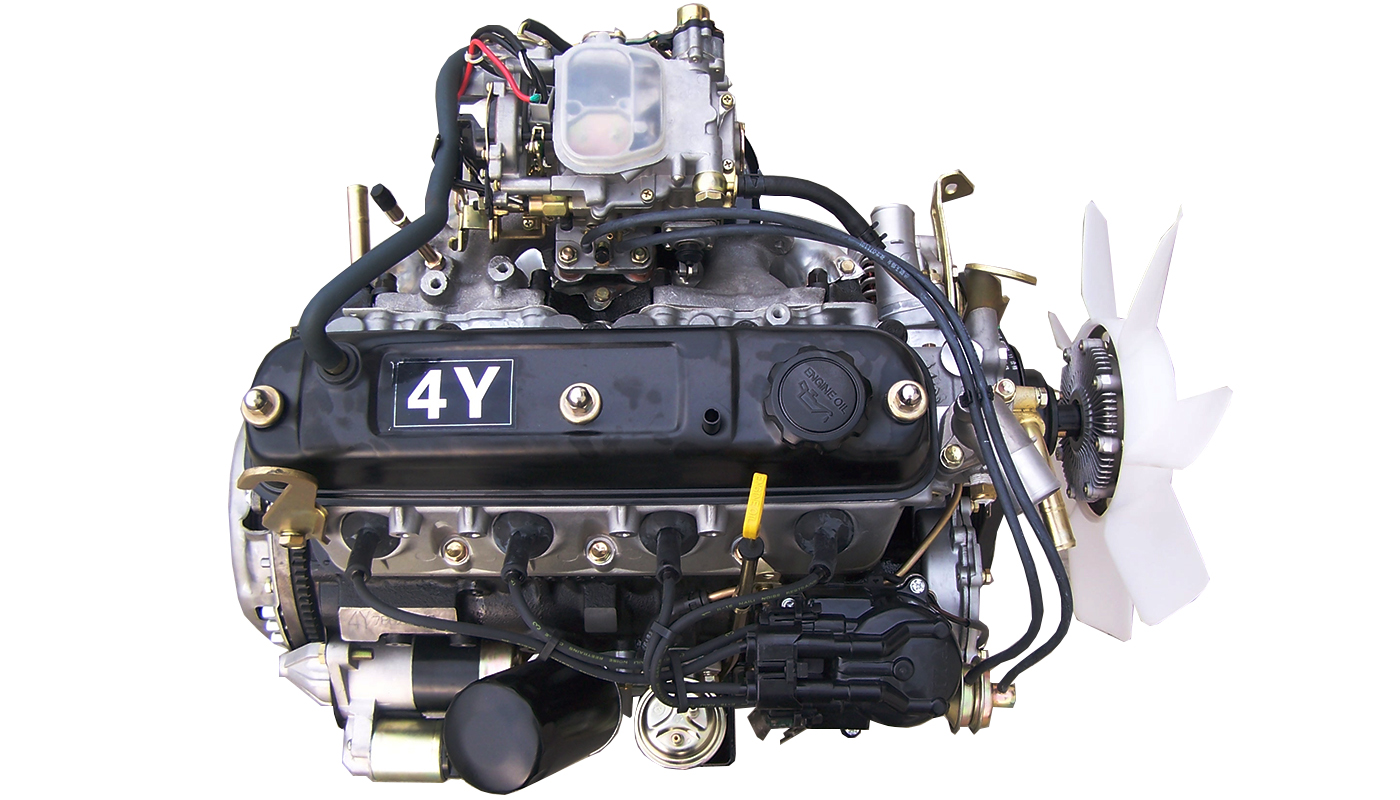Everything You Need to Know About the 4Y Engine and Its Performance
Everything You Need to Know About the 4Y Engine and Its Performance
Blog Article
Why the Engine Is the very best Selection for Performance and Efficiency in Your Cars And Truck
The engine stays a crucial part in vehicle style, largely due to its considerable influence on both performance and effectiveness. As improvements in technology enable smaller engines to provide amazing power while maximizing fuel economic situation, the assimilation of attributes such as turbocharging and crossbreed systems ends up being increasingly crucial.
Understanding Engine Kind
Comprehending the numerous kinds of engines is critical for maximizing performance and efficiency in automobile style. The key engine types include interior combustion engines (ICE), electric engines, and hybrid systems, each offering unique benefits and restrictions.
Internal combustion engines, which can be more categorized right into fuel and diesel variations, rely upon the burning of fuel to produce power. Fuel engines generally supply higher RPMs and much better velocity, while diesel motor are understood for their torque and fuel efficiency, making them excellent for sturdy applications.
Electric engines, on the other hand, utilize electrical motors powered by batteries or fuel cells. They offer rapid torque distribution, leading to smooth acceleration and reduced exhausts. The effectiveness of electric engines is dramatically higher than that of ICEs, making them a popular choice for eco-conscious customers.
Crossbreed systems combine both internal combustion and electric engines, leveraging the staminas of both modern technologies. They optimize fuel consumption by making use of electrical power at lower rates and switching to gas or diesel for greater speeds or heavier tons.
Selecting the ideal engine kind is crucial for achieving wanted efficiency metrics and environmental sustainability in modern-day automotive design.
The Impact of Engine Size
Engine size frequently plays a crucial duty in determining an automobile's performance and effectiveness. Typically measured in liters or cubic centimeters, engine dimension directly influences the power output and torque features of an automobile. Bigger engines usually create even more horse power, making it possible for greater velocity and higher leading speeds. This is particularly helpful in applications requiring robust performance, such as sporting activities cars and durable vehicles.
Nonetheless, boosted engine dimension typically correlates with diminished gas effectiveness. Smaller engines can deliver ample efficiency for daily driving while promoting far better effectiveness, making them a popular selection in portable and mid-size cars.
Additionally, innovations in engine style, such as turbocharging and direct gas injection, allow smaller sized engines to accomplish power levels equivalent to their bigger counterparts. This fad stresses the value of not exclusively focusing on engine size yet likewise considering total automobile design and modern technology (4y engine). Eventually, the impact of engine size on performance and effectiveness underscores the demand for consumers to assess their details driving requirements and preferences when picking an automobile
Advanced Engine Technologies
Technologies in engine innovations have actually considerably improved the landscape of automotive performance and effectiveness, structure upon the fundamental concepts established by engine dimension. Especially, developments such as turbocharging and direct gas shot have actually enabled smaller engines to provide power degrees formerly linked with larger counterparts. Turbochargers compress air going into the engine, permitting for raised power output without a matching rise in engine dimension, while direct shot optimizes gas shipment, enhancing combustion performance.
Additionally, variable shutoff timing systems have actually arised as an important modern technology, permitting engines to readjust shutoff procedure based upon driving problems. This versatility enhances both performance during acceleration and fuel efficiency during travelling. Crossbreed and electrical engine modern technologies better highlight the shift in automotive layout, incorporating typical inner burning engines with electric motors to maximize efficiency while lowering exhausts.
In addition, innovations in products science have led to lighter, extra sturdy engine elements, even more enhancing efficiency and durability. The integration of advanced electronic devices and engine control systems also permits for real-time this contact form modifications, guaranteeing optimal efficiency across various problems. Collectively, these advanced engine modern technologies not only improve automobile performance but additionally add to an extra sustainable automotive future, showing the continuous evolution of engine layout.
Harmonizing Power and Effectiveness
Striking an equilibrium in between power and efficiency is crucial in contemporary automotive style as producers look for to meet progressively stringent exhausts regulations while pleasing consumer need for performance (4y engine). The obstacle hinges on maximizing engine qualities to deliver robust power output without compromising gas economy
To attain this balance, engineers use various methods, such as turbocharging, which boosts engine power by requiring in even more air, allowing for a smaller engine variation that improves fuel effectiveness. Variable shutoff timing technologies likewise play a substantial role, allowing engines to change their efficiency characteristics based upon driving problems, thus boosting both power and efficiency.
In addition, developments in products and making techniques have caused lighter engine parts, which reduce general lorry weight and boost gas efficiency without jeopardizing power. Crossbreed technologies have additionally become a practical remedy, incorporating traditional internal burning engines with electrical powertrains to give a boost in performance while preserving reduced discharges.

Future Fads in Engine Design

Furthermore, the growth of sophisticated products, such as lightweight compounds and high-strength alloys, is readied to change engine components. These products not only minimize weight but likewise boost thermal efficiency, therefore optimizing efficiency. In addition, producers are discovering variable compression ratios, enabling engines to adjust to different driving conditions, boosting both power output and fuel economic situation.
Further, the increase of fabricated intelligence and maker understanding in engine design is allowing anticipating maintenance pop over here and real-time performance optimization. This innovation can bring about engines that self-adjust for maximum effectiveness based upon driving patterns.

Final Thought
In final thought, the engine serves as an essential component in achieving optimal performance and performance in modern-day lorries. The interaction between engine size and layout proceeds to progress, driving advancements that balance exciting performance with environmental sustainability.
Additionally, improvements in engine style, such as turbocharging and straight fuel injection, allow smaller sized engines to attain power degrees equivalent to their larger equivalents.Developments in engine innovations have actually significantly reshaped original site the landscape of vehicle performance and performance, building upon the fundamental principles developed by engine dimension. Turbochargers compress air going into the engine, allowing for enhanced power output without a matching boost in engine dimension, while straight shot enhances fuel distribution, boosting burning performance.
Hybrid and electrical engine modern technologies better illustrate the shift in vehicle design, integrating standard interior burning engines with electrical motors to optimize effectiveness while lowering emissions.
Collectively, these innovative engine technologies not only boost car performance however also add to a more lasting automotive future, demonstrating the ongoing evolution of engine design. (4y engine)
Report this page